Rome Tourism: Archaeological Adventures in Rome.
- oldbagonaplane
- Nov 14, 2018
- 4 min read
Updated: Feb 28, 2019
LARGO DI TORRO ARGENTINA, CRYPTA BALBI, DOMUS-ROMANE AT PALAZZO VALENTINI, TRAJAN'S COLUMN AND TRAJAN'S FORUM, BATHS OF DIOCLETIAN, BASILICA OF ST. MARY OF THE ANGLES AND MARTYRS, MONTMARTINI POWER STATION

See Highlight Reel for easy access information and addresses.
While there are archaeological findings just about on every corner in Rome, Bruna and I stuck to the sites that are slightly more obscure and unusual than that big, football stadium- looking thing at the Piazzo del Colosseo (the Colosseum, silly).
Let's start with a little history lesson:
Julius Caesar, Emperor of a Rome that stretched from Europe to East Africa to the Middle East, met his fate at the Curia of Pompey on the 15th of March 44BC, and things pretty much fell apart from there. And there is where we started our journey.

The Curia of Pompey was a meeting room located at the Theatre of Pompey. The theatre, built in 55 AD was the first and only theatre open to the public for forty years, and housed the art collection, gardens, stages and meeting places for Pompey the Great.
It now houses feral cats.
There is too much history to go into on this little blog, so look up Campus Martius, which was the public land where the Theatre of Pompey was located. Eventually, this area was worked over and became the Largo di Torre Argentina. With the reunification of Italy in 1909, the city of Rome's much due facelift began in this square and promptly ended with the discovery of a giant marble head.
After discovering Pompey's theatre and by 1927, the destruction of the square stopped, the archeologists moved out and the cats moved in. The discovery, in 1950, of the ruins of the people who found the ruins led actor Antonio Crast (I'm really not sure what an actor was doing here) to set up a foundation to help feed the cats that were living amongst the ruins.
There are around 150 cats at the sanctuary at any given time. They are neutered, spayed, sterilised, fed and put up for adoption, which is successful for around 129 cats per year. The foundation also cares for elderly cats.
A short skip and jump from the crazy cat place is the Crypta Balbi. The Crypta Balbi, acquired by the city in 1981 for use as the headquarters for the National Museum of Rome, is like a time travellers paradise. You see many-layered ruins of merchant housing and church buildings from time periods including Medieval, Renaissance, and the Middle Ages, built upon latrines, workshops, dumps, and convents, etc., from Antiquity and what ever comes on the time-line of history before then.
The museum encompasses and entire city block and extends out further into the outlying neighbourhood, with archaeological discoveries visible at street level.
Domus-Romane at the Palazzo Valentini is similar to the Crypta Balbi in that it is an interesting archaeological find that is presented in a new and exciting way.
Discovered while excavating for a new parking lot, the Domus-Romane has been turned into a multimedia experience that recreates the two Imperial villas that were found there. Mosaics, polychrome floors, cobble stones and the remains of spa baths are enhanced with projections and programmed history.
Just outside the Domus-Romane, is Trajan's Column and the remains of Trajan's Forum. The column was originally erected inside the Forum, which was a meeting and shopping area when the column was installed in AD113.
The shaft of the column is 30 meters (98 feet) in height and is made up of 20 Carrara marble drums, weighing 32 tons each. The drums, which appears to spiral upwards, is decorated with relief carvings exploring the Conquest of Dacia (land reaching from the black sea to the Balkan Mountains) and King Decebalus by Trajan in the years 101-102 and again in 105-106.

I know it improper to say, but according to this depiction, Emperor Trajan was one sexy beast.
On the northeast summit of Viminal, the smallest of the 7 Hills of Rome, remains the Baths of Diocletian. Emperor Dioclectian begun the construction of the baths in 298AD which were completed by Constantius in 306AD. Restored in the early 5th Century, the baths remained an integral part of Roman life until the Seige of Rome in 537.
With water supplied by Aqua Marcia, the baths took up 130,000 square meters or 32 acres of land. The complex included libraries, gymnasiums, a fridgidarium, tepidarium and caldarium, and serviced upwards of 3000 people at a time.
Pope Pius 1V, in accordance to a vision by monk Antonio del Duca, ordered the construction of the Basilica of St. Mary of the Angels and the Martyrs. Built between 1563-1564, the basilica's church was designed by Michelangelo Buonarroti to fit into the circular space of the original fridgidarium of the Baths of Diocletian. This resulted in the churches unusual, and breathtaking circular shape.

Another point of interest within the Basilica of St. Mary of the Angels and the Martyrs is astronomer Francesco Bianchini's Meridian Line. Commissioned by Pope Clement X1, the meridian line, or sundial, helped to check the accuracy of the Gregorian Calendar and also helped to predict the date each year for Easter. Bianchini also included holes in the ceiling that mark the passages of the stars.
Finally, Bruna and I found ourselves at her favourite museum in Rome; the Montemartini Power Station.
The Montemartini thermal power station was built in the Art Nouveau style in 1912, and was the first public electricity producer in Rome. The station was closed in the 1960's and the building remained closed.
While the Capitoline Museums were being renovated in 1997, over 400 statues and reliefs were temporarily housed and juxtaposed with the hulking old machinery in a show titled 'Gods Against Machines'.

This happy accident has been so successful that the show became permanent and has been restored and restaged as a permanent home to those statues including...the giant marble head that was found at the Largo Di Torro Argentina, the cat sanctuary.


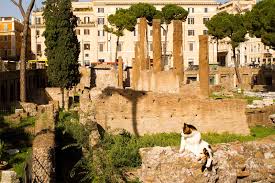

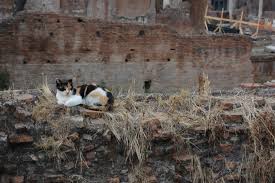

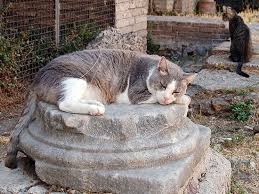



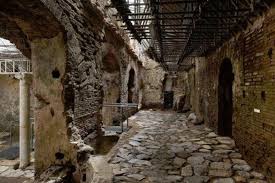

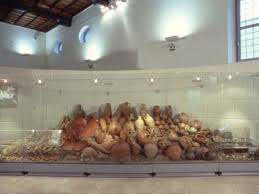

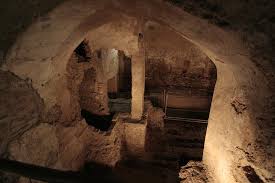


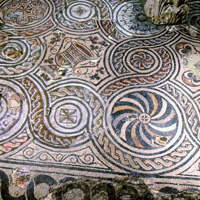
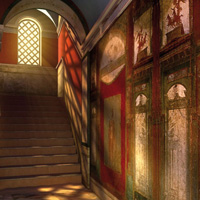
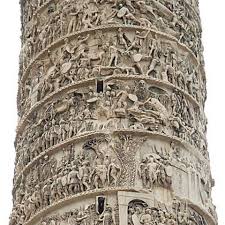


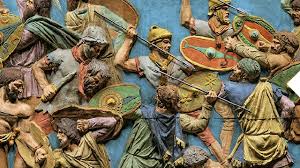

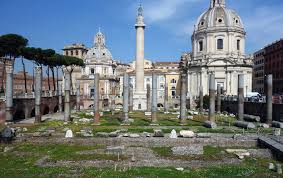




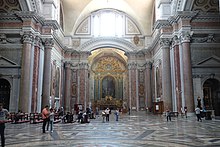



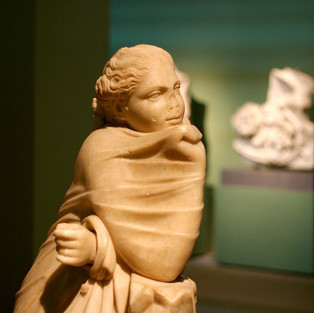











Comments